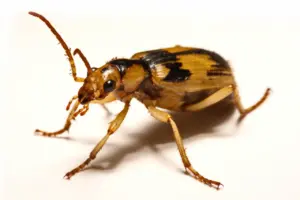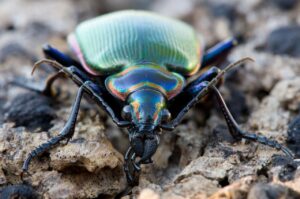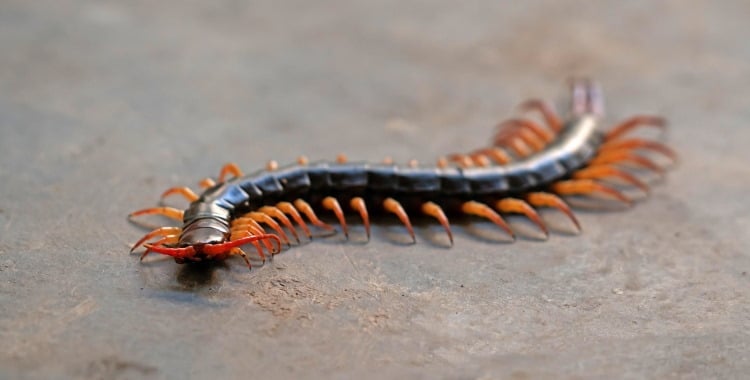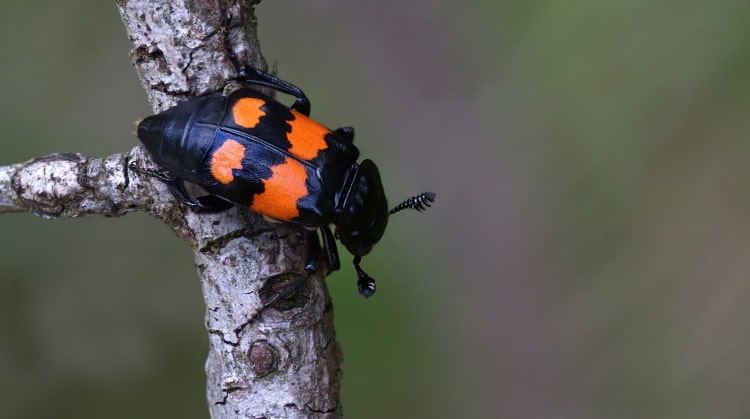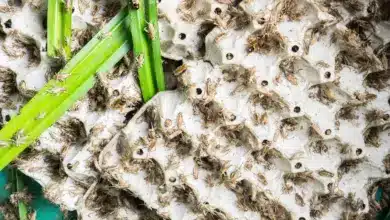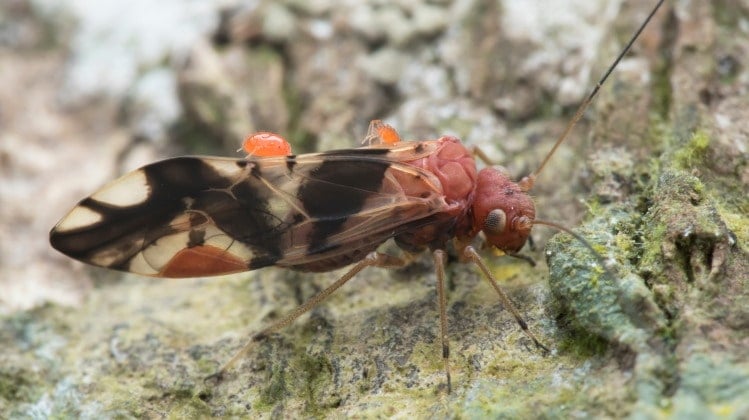The Toxic Beetles of the Lycid Family
The Lycid family of beetles, also known as net-winged beetles, contains over 600 species worldwide that display a fascinating array of chemical defenses. These include species with toxic secretions, glowing bioluminescence, and explosive chemical reactions.
In this article, we will provide an overview of some of the most well-known toxic Lycid beetles, describing their physical features, distribution, defenses, and impacts on humans.
Overview of the Lycid Family
Beetles in the Lycid family all possess a characteristic vein pattern in their wings that resembles the strands of a net.
Other shared features include a soft, leathery exoskeleton and slender, elongated bodies. Lycid beetle larvae are grub or worm-like with enlarged heads and mandibles for feeding.
Most Lycid beetles have some form of chemical defense, whether toxic secretions, foul-tasting compounds, or bioluminescent warnings.
These help deter potential predators. Lycids use their bioactive compounds in very creative ways, from simple oozing of toxins to complex explosive chemical jets.
There are Lycid species found on every continent except Antarctica. They occupy diverse habitats, including forests, grasslands, agricultural areas, and urban environments.
Both the larvae and adult beetles are predators of other insects. The Lycids are generally nocturnal or crepuscular, hiding during the day.
Below are some of the most infamous and fascinating toxic Lycid beetles from around the world.
The Blister Beetle
Blister beetles are members of the genus Meloidae in the Lycid family. There are over 2500 species of blister beetles distributed globally. They get their name from the painful blistering effects caused by their defensive secretions.
Physical Appearance
Blister beetles range in size from just 10-40 mm long with elongated, narrow bodies. Colors vary widely but often include black stripes on a yellow, orange, or brown background color.
The exoskeleton is softer than many beetles. The elongated heads possess chewing mouthparts.
Habitat and Range
Different blister beetle species occupy diverse habitats, including deserts, grasslands, forests, and cultivated fields. They avoid cold alpine areas.
Their range covers most warm temperate and tropical regions worldwide. Several species have been accidentally introduced beyond their native range.
Life Cycle
Blister beetles undergo complete metamorphosis. Eggs are laid in the soil. Larvae hatch and search for bee nests as they are parasites of bee larvae.
After consuming the bee larvae, the beetle larvae pupate in the soil. The entire life cycle can take one to several years, depending on the species.
Defense and Toxicity
Blister beetles get their name from a defensive chemical called cantharidin that they exude from joints in their legs when threatened.
This causes large, painful blisters on human skin. If ingested, it causes severe gastrointestinal issues. Despite toxicity, cantharidin has been used medicinally.
The beetles reflexively bleed droplets of the chemical when molested. The compound also serves as an anti-predation defense against animals. Bright contrasting colors may warn predators of their toxicity.
Human and Animal Impacts
Blister beetles pose a risk to livestock and humans that accidentally ingest them in hay or feed. Only a few beetles can cause toxic effects. Farm workers also face blistering of the skin from beetle secretions.
On the other hand, cantharidin has been traditionally used for wart removal and other growths at diluted doses. Further research is needed on applications.
Bombardier Beetles
Bombardier beetles belong to the ground beetle subfamily Brachininae, which are grouped within the diverse Carabidae family. Over 500 species of bombardier beetles are found globally. They are characterized by their explosive chemical defense mechanism.
Physical Appearance
Most bombardier beetles are between 15 to 25 mm in size with oval, flattened bodies. Colors consist of black, brown, tan, or reddish tones. The elytra are typically patterned, and the heads possess powerful mandibles.
Habitat and Range
Bombardier beetles live in many habitat types, including forests, grasslands, and wetlands. They avoid arid desert regions. Their global distribution includes North America, Europe, Asia, northern Africa, and Australia.
Life Cycle
Bombardier beetles undergo complete metamorphosis with eggs laid in the soil. Larvae hatch and feed on other insects before pupating underground. The life cycle typically lasts one year.
Defense and Toxicity
When threatened, bombardier beetles eject a boiling hot, noxious spray from special glands in their abdomen with a popping sound. The spray reaches 100°C and can temporarily blind or burn predators.
The defensive secretion consists of hydroquinone and hydrogen peroxide, which undergo an explosive exothermic reaction when mixed together.
Their ability to control the direction, distance, and quantity of the spray allows them to accurately hit predators while conserving chemicals. The spray may also contain pheromones.
Human and Animal Impacts
The hot defensive spray of the bombardier beetle can cause irritation and blisters if it contacts human skin.
However, they only react this way when extremely threatened, so they have minimal impacts. Their defensive strategy helps protect them from predators in their natural habitats.
Bioluminescent Click Beetles
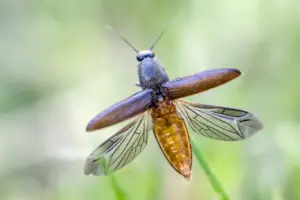
Click beetles in the genus Pyrophorus are members of the Elateridae family that exhibit bioluminescence. Over 80 species inhabit Central and South America. They produce a glow from their light organs to deter predators.
Physical Appearance
Click beetles reach 1 to 2 inches in length with elongated, flattened bodies. They are mostly dark brown or black in color with spots that glow bright green. The light organs are found under the pronotum and abdomen.
Habitat and Range
Bioluminescent click beetles live in tropical rainforests and moist woodlands of Central and South America. Most species occur in Brazil, but some range north to Mexico and the Caribbean islands.
Life Cycle
Larvae develop in soil, feeding on decaying wood and roots before pupating. Adults emerge in spring and are active between summer and fall. The complete life cycle takes 1-2 years.
Defense and Bioluminescence
When disturbed, click beetles emit a bright green-yellow glow from their light organs, which serves to warn and startle predators.
This defensive bioluminescence is the result of a chemical reaction between luciferin and the enzyme luciferase activated by neural stimulation.
Different species exhibit various glow patterns, including continuous glowing or rapid flashing. Some have lighter-colored glow spots to enhance visibility. The bioluminescence illumination can be seen from several meters away.
Human and Animal Impacts
The bioluminescent click beetles are an indicator species of a healthy rainforest ecosystem. Their glow is used for ecosystem tours in Central America.
The beetles are harmless to humans and do not bite or sting. Their bioluminescence provides effective defense against nighttime predators.
Soldier Beetles
Soldier beetles comprise over 800 species in the Cantharidae family worldwide. They are named for their black and red coloration, which resembles military uniforms. Soldier beetles produce potent chemical secretions used in defense.
Physical Appearance
Soldier beetles reach 5 to 15 mm in length. They have soft oval bodies that are velvety black with red, orange, or yellow markings. Legs and antennae are also patterned. The elytra is short, exposing the abdomen.
Habitat and Range
Soldier beetles are found worldwide in temperate regions. Both the adults and larvae inhabit fields, meadows, forests, marshes, and along waterways. They are more active in warmer months.
Life Cycle
Eggs are laid on leaves or soil near aphid colonies, which the larvae will feed on. Larvae are slender and velvet-black in color. After pupating in the soil, adults emerge and live for several weeks to months.
Defense and Toxicity
Soldier beetles reflexively bleed from their leg joints when disturbed. This releases a toxic chemical cocktail that irritates the skin and can cause vomiting if ingested. The secretions help protect the beetles from predators. Their aposematic coloration also warns of toxicity.
Human and Animal Impacts
Soldier beetles help control aphids and other insect pest populations as larvae and adults. The defensive secretions can cause localized blistering on human skin if handled roughly.
Overall, though, soldier beetles are harmless to humans unless provoked. They are valued crop pollinators.
Fiery Searcher Beetles
The fiery searcher beetle (Calopteron reticulatum) is a Lycid beetle inhabiting wooded areas of North America. They emit a toxic chemical spray when threatened, much like the bombardier beetle. Around 15 species are in this genus.
Physical Appearance
Fiery searcher beetles reach 10 to 20 mm in length. They have an orange-red or brownish-black body and dark brown legs. The head is large with curved mandibles. The antennae are saw-toothed.
Habitat and Range
This beetle is found throughout the eastern United States and southeast Canada in woodland and forest habitats. They live in decaying logs and under tree bark.
Life Cycle
The life cycle lasts one to two years. Eggs are laid in rotting wood and litter. Larvae develop, feeding on other insect larvae before pupating in the soil. Adults emerge in spring.
Defense and Toxicity
When disturbed, these beetles bend their abdomen forward to shoot a hot spray of irritating chemicals from the tip. The spray contains aldehydes, acids, and alcohols.
Temperatures can reach 100°C through an explosive reaction. This provides effective defense against predators.
Human and Animal Impacts
The hot defensive spray can cause skin blistering in humans if it touches bare skin. The beetles are not aggressive, though, and only spray when highly threatened. Their chemical defenses help protect them from predators in natural ecosystems. They have minimal environmental or economic impact.
Cardinal Beetles
Cardinal beetles comprise around 90 species in the genus Pyrochroa found across Europe, northern Africa, and Asia. They have striking red and black coloration. The larvae prey on other insects while the adults eat pollen.
Physical Appearance
Cardinal beetles reach 10 to 25 mm in length with oval-shaped bodies. They are vibrant red-orange in color with variable black patterns. The elytra are wider than the pronotum, and the antennae are serrated.
Habitat and Range
These beetles live throughout central Europe to eastern Russia, Turkey, Iran, and North Africa. They inhabit meadows, fields, forests, and riversides, preferring areas with blossoming flowers.
Life Cycle
Eggs are laid in soil or rotting wood. Larvae hunt other insect larvae underground. After pupating, the adults emerge in spring and live for several months.
Defense and Toxicity
When threatened, cardinal beetles can release an irritating odorous chemical from their leg joints as a defense. The toxic secretions may cause skin irritation in humans. Their bright coloration also serves as a warning.
Human and Animal Impacts
Cardinal beetles are important pollinators of wildflowers and flowering trees. Their larvae help control pest insect populations as they are predatory. While their secretions may cause localized blistering, cardinal beetles are generally harmless to humans. They are valued for their appearance.
Net-Winged Beetles
Net-winged beetles comprise over 100 species in the genus Calopteron in the Lycidae family. They are named for the distinctive network of veins in their wings. Like other Lycids, they possess toxic chemical defenses used to deter predators.
Physical Appearance
Net-winged beetles reach 10-20 mm in length. They have slender, elongated bodies that are brown, black or reddish in color with wings that have a net-like pattern of veins. The antennae are serrated or saw-toothed.
Habitat and Range
Species are found worldwide in northern temperate regions. Their habitat includes meadows, forests, marshes and along lakes and rivers. Larvae develop in rotting wood.
Life Cycle
Females lay eggs in decaying logs or stumps. The larvae feed on other insect larvae within the rotting wood for a year before pupating in the soil. Adults emerge in spring and live for a few months.
Defense and Toxicity
When threatened, net-winged beetles release an irritating odor and chemical secretions from joints in their legs that blister skin and irritate mouths and throats. This can cause animals to vomit or release their grip on the beetle. Their cryptic habits also aid the defense.
Human and Animal Impacts
While painful if handled, net-winged beetles pose minimal risks to humans. Their chemical secretions help protect them against predation in natural ecosystems.
Larvae help recycle nutrients in decaying wood. Overall, net-winged beetles play a beneficial ecological role.
FAQs
How do blister beetles cause blistering?
Blister beetles secrete a toxic chemical called cantharidin through joints in their legs when threatened. This causes painful blistering and irritation when contacting human skin. If ingested, it can damage internal organs and cause gastrointestinal distress.
However, cantharidin has been used medically for wart removal when applied topically at lower, non-toxic doses.
What makes the spray of bombardier beetles so hot?
Bombardier beetles spray a boiling, noxious liquid that can reach 100°C through a chemical reaction between hydroquinone and hydrogen peroxide inside their abdomens.
This exothermic reaction rapidly heats and pressurizes the spray, which explodes out from their abdomens when threatened. The beetles can control the direction and distance of their defensive spray.
How does bioluminescence help click beetles survive?
Some click-beetle species have light-producing organs that glow bright green when disturbed. This bioluminescent display startles and temporarily blinds predators, allowing the beetles to escape.
Different flashing patterns may further disorient predators. Their glow is the result of a chemical reaction within the beetle’s light organs.
Why are soldier beetles named that way?
Soldier beetles have black bodies with red, orange, or yellow markings, which resemble military uniforms. This led to their common name.
They also reflexively bleed toxic chemicals from their leg joints to deter predators, similar to a soldier defending himself. The chemicals irritate the skin and can cause vomiting if large amounts are ingested.
Do fiery searcher beetles shoot actual flames?
No, fiery searcher beetles cannot produce real fire. But they can spray a hot mix of chemicals that briefly reaches about 100°C through an explosive reaction within their abdomens.
This makes a popping sound and is an effective defense against predators. The spray can cause painful skin blisters on contact. Their name refers to the loud, fiery defense.
How do net-winged beetles defend themselves?
Net-winged beetles employ a two-pronged defense strategy when threatened. First, they release a foul-smelling odor from their leg joints that serves as a warning. Second, they secrete toxic chemicals that can blister and irritate the skin, mouths, and throats of predators.
This causes animals that taste or eat the beetles to instantly release their grip and potentially vomit. The irritation and bad taste provide strong deterrence against predators trying to consume net-winged beetles.
Their cryptic habits, camouflage, and rapid movements also help them avoid detection in their natural habitats. The net-winged beetle’s arsenal of chemical weaponry makes it a formidable opponent despite its small size.
Conclusion
The Lycid family contains some of the most fascinating chemically-defended species of beetles.
Blister beetles, bombardier beetles, bioluminescent click beetles, soldier beetles, fiery searcher beetles, and cardinal beetles are just some examples of Lycids that use toxic secretions, boiling hot sprays, or glowing light to deter predators.
While human impacts are generally minimal, these beetles employ clever strategies to avoid becoming prey. Studying their chemical defenses continues to reveal insights about insect evolution and ecological interactions.
With over 600 Lycid species globally, there is still much more to uncover about this charismatic beetle family.


